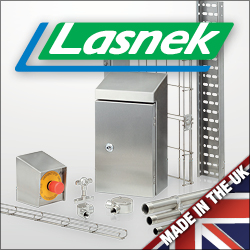
Posted to News on 21st Jul 2014, 15:40
Pneumatic cushioning: save costs with the right adjustment
Productivity, energy efficiency, and a long service life: these three requirements are at the top of the list for end users when it comes to pneumatic automation systems. And most of the time just the right adjustment is sufficient to meet these requirements precisely. With optimally adjusted pneumatic cushioning, machine manufacturers and system integrators can shorten cycle times by up to 40%, increasing productivity accordingly. At the same time, they often lower air consumption by more than 50% compared with cylinders with pre-adjusted cushioning.
Pre-adjustments are a tricky issue. Car seats didn't use to be height adjustable. Manufacturers used an average and adjusted the seat applying that value. The result: especially tall or short drivers chose vehicles based on whether they hit their head on the roof or could comfortably reach the pedals. Sometimes, tall drivers had to purchase higher-class vehicles than they actually wanted - and dip deeper into their pockets. Of course, today seat height adjustment is standard in all vehicles because no manufacturer wants to alienate customers due to a component costing only a few Euros.
A reverse trend is currently present in automation. To simplify engineering, more and more automation manufacturers are offering pre-adjusted modules. This may simplify commissioning, but it can also quickly hurt productivity and energy efficiency. One example: pre-adjusted cushioning for pneumatic cylinders.
Cushioning prevents the cylinder piston from hitting the cylinder cover or base at uncontrolled speeds. Uncushioned cylinders strain transported workpieces, shorten the service life of the module, and generate vibrations within the entire machine. Furthermore, they lead to increased noise. Cushioning reduces the piston speed of a cylinder in a controlled manner before reaching the final position. Pneumatic manufacturers generally implement three techniques for cushioning: simple mechanical shock absorption, external shock absorbers, or pneumatic cushioning. External shock absorbers are the most expensive method, which also requires additional space. Mechanical cushioning reduces impact energy only to a limited extent.
Pneumatic cushioning is the most sophisticated and efficient option for most applications, with both pre-adjusted and adjustable variants. Pre-adjusted cushioning uses an average value, just as the non-adjustable car seats mentioned above. Ventilation is fixed and cannot be changed. Pre-adjusted cushioning can only cover a limited range of the possible cushioning capacity and is forced to compromise when it comes to dynamics and precision.
Adjustable cushioning
If moving masses are too small or speeds too low, over-cushioning results. The piston rebounds before reaching the end position due to the excessive air cushion, causing vibrations. The result: increased cycle times and the sensor may accidentally switch. In the worst case scenario, the follow-up process initiates prematurely and can cause a machine control malfunction. This is why adjustable cushioning is highly recommended.
On the other hand, if the masses are too large or the speed is too high, under-cushioning occurs. The insufficient air cushion causes the piston to hit the end position with excessive energy, possibly damaging the cylinder and application. Vibrations also result, which lower the system's service life and increase noise levels. In this case, the user must use a larger cylinder with higher cushioning capacity to sufficiently cushion the mass or speed. This, however, increases procurement and operating costs. By contrast, adjustable cushioning makes optimal use of pneumatic cylinder performance. Adjustments are made via an adjusting screw, which adapts the exhaust duct cross-section.
With adjustable cushioning, for example in the current generation of Rexroth Pneumatics ISO pneumatic cylinders, only a few turns of the screw are sufficient to adjust the cushioning to the workpiece weight and the dynamics of the movement. The results of comparative measurements will get your attention: optimally adjusted cushioning shortens braking time by up to 75% compared with pre-adjusted systems. The result: significantly reduced cycle times and increased productivity. Additional findings show that pneumatic cushioning is right for modern times, when energy efficiency is becoming ever more important. The capacity of pneumatic cushioning is the basis for dimensioning a pneumatic cylinder. The specifically adjustable cushioning allows pneumatics users to scale cylinders up to three sizes smaller than with pre-adjusted cushioning, significantly lowering air consumption in applications.
The hard results: with a workpiece weight of 7kg, a piston diameter of 32mm, a stroke of 250mm, and a speed of 1m/s, pre-adjusted pneumatic cushioning requires approximately 80ms to brake, compared with precisely adjusted cushioning which requires only around 20ms. This reduction of 75% minimises cycle times. In practice, an improvement in cycle times and productivity of up to 40% can be achieved.
With adjustable cushioning, significantly smaller cylinders can achieve the energy performance of a cylinder with pre-adjusted cushioning. For example, a cylinder with adjustable cushioning with a 16mm diameter can replace a pre-adjusted cylinder with a 32mm diameter.
Air consumption more than halved
The use of a smaller cylinder alone achieves a reduction of air consumption of 53%. In addition, users can also implement smaller valves. Smaller-dimensioned valves and tubing can achieve even higher savings, depending on the application. Air consumption is minimised.
Tests with higher loads have revealed additional energy-related improvements. The rule of thumb: the more powerful the application, the larger the savings potential. Users save on energy costs, machine manufacturers save on procurement costs for cylinders, valves, maintenance units, and other components. Even the environment benefits.
Rexroth Pneumatics has worked to optimise its concept of pneumatic cushioning for many years with the aim to cushion kinetic energy to the greatest extent possible to realise short cycle times and energy-optimised, minimum-cost applications with minimal vibrations and noise.
The company has expanded its approach beyond the use of ISO cylinders. As the first pneumatic manufacturer, Rexroth is currently launching pneumatic cushioning for mini slides. The advantage for this area of application: no need for a cost-intensive exchange of hydraulic shock absorbers.
Reduced air consumption and energy costs, minimised investment costs, and smaller installation space: it's all about putting the right "spin' on the cushioning.
To learn more about pneumatic cushioning please go to www.aventics.co.uk.
AVENTICS (part of Emerson Automation Solutions)
Preston Mill Barn
Siddington
GL7 6ET
UNITED KINGDOM
+44 (0)845 6030025


















